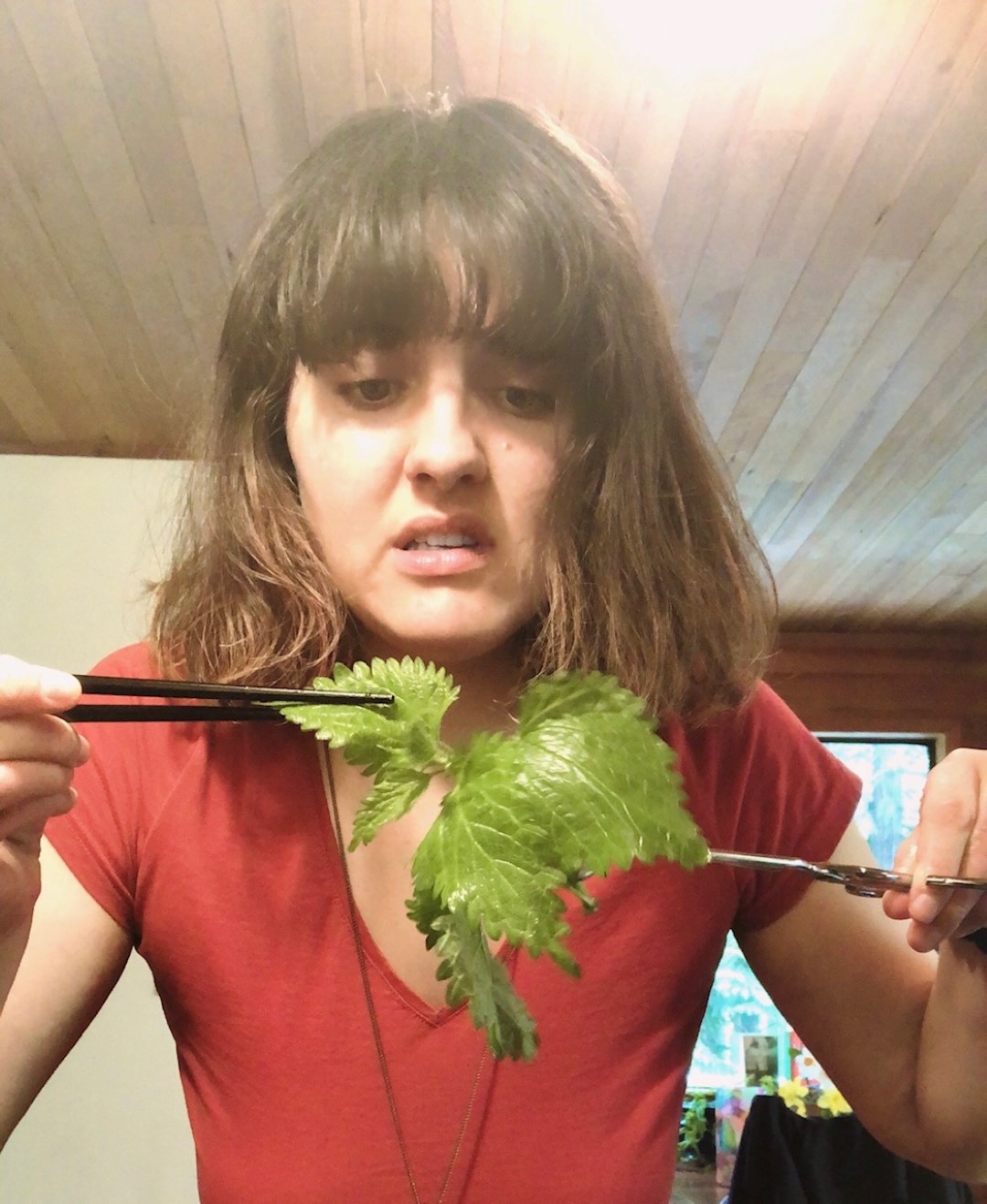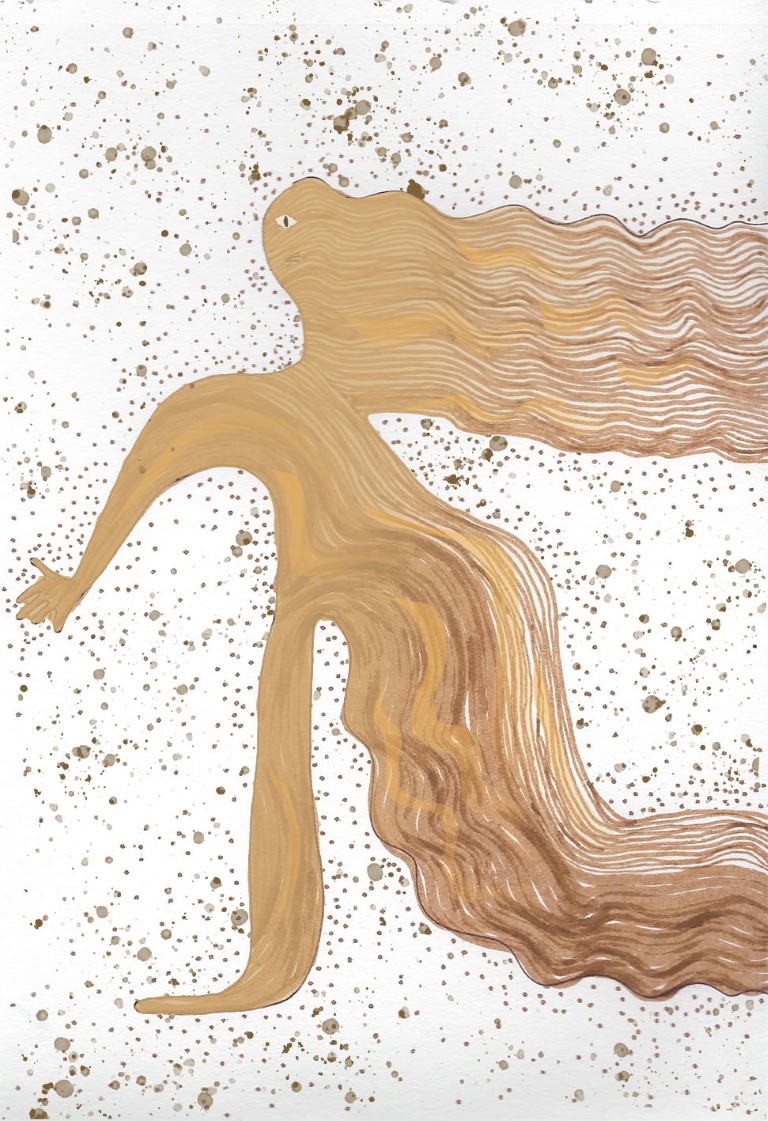
How to make stinging nettle pesto
By Morgan Hannah, Life & Style Editor
Making my very own stinging nettle pesto for a chicken pasta dinner was a really fun food experiment for me! Living on Galiano Island, foraging for food in the forest is an actual option! There’s a significantly lower reality of pesticides and pollution poisoning the edible plants and fungi surrounding my home—it’s just a matter of knowing what is what and how everything must be prepared before I consume it.

Inspired by a couple living on one of the neighbouring Southern Gulf Islands, Lovin Off The Land’sChris and Stef from Pender Island have taken it upon themselves to only eat things that they have grown, caught, raised, or foraged for 365 days. Wow, talk about a challenge that brings them right back to their ancestral roots!
While I won’t be raising any chickens or growing wheat for pasta anytime soon, I did use stinging nettle from a patch that has been growing in my backyard longer than I’ve been growing on Galiano. And I had to double-check that I had the right plant; here I am, “institutionalized” to using grocery stores.
First thing’s first, DO NOT touch the stinging nettle plant unprocessed! Stinging nettle stems and leaves are coated in what look like delicate little hairs, but if these “hairs” come into contact with skin, they feel like needles. Even long after touching the plant, your skin will feel on fire and tingly for hours, and you may also develop a rash! This is because stinging nettle hairs contains formic acid, histamine, and acetylcholine.

However, stinging nettle plants when processed have a variety of health benefits, may reduce inflammation, can treat hay fever, lower blood pressure, and aid in blood sugar control. Stinging nettle also provides the body with a variety of vitamins and minerals, including vitamins A, B, C, and K, as well as calcium, iron, and magnesium. It also contains healthy fats such as linolenic acid, oleic acid, and stearic acid, all of which are essential in providing the body with energy, protecting organs, and supporting cell growth.
In my first round of foraging, I wore gloves and ripped the whole plant from the ground and into a bucket. This proved to be the wrong method, as I still got stung through the gloves, had to remove all the leaves from the stems, and found myself short on nettle. Round two, I went at the patch with a pair of kitchen scissors, clipping off the leaves into my bucket. This made it way easier, and I was able to harvest far more than before.
Next, I washed the nettle leaves carefully, making sure I didn’t touch them. Once cleaned, I transferred the nettles to a pot, filled it up with warm water and a pinch of salt, then brought it all to a boil, stirring occasionally.

At this point, the stinging nettle leaves are safe to touch—they have been neutralized! I strained the water from the pot, took handfuls of the leaves out, and squeezed the excess water from the leaves. Then I chopped the nettles finely, roughly chopped up a small shallot (a replacement for the three cloves are garlic the recipe calls for) and ground up a small handful of roasted almonds (a replacement for the uber expensive pine nuts the recipe calls for) in a granite mortar and pestle. Fun fact! Pesto is called pesto because it is made using a mortar and pestle! If you do not have a mortar and pestle or the patience to use a mortar and pestle, a food processor works too. According to the recipe, it won’t be the same, but whatever.
After the almonds (or pine nuts or walnuts) were ground into a smooth-ish crumble, I added in the shallots (or garlic) and mashed those up too. Then I threw in a pinch of salt, a drizzle of olive oil (get the good stuff—you will taste the difference), and some chopped nettles. I mashed this up as best I could then put it aside and did another batch. (It was a small mortar and pestle, gimme a break.)
Eventually, I had all the pesto ground and mixed, having to add waaaay more olive oil than I ever anticipated… then I mixed it over some penne noodles and chunks of grilled chicken (seasoned only with salt and pepper), and it was delicious.

If you’re unsure how much olive oil to add, think of it this way: are you going to be using your pesto as a dip, a spread, or a sauce? Adjust the wetness to fit the bill.
I hope you enjoy making your very own stinging nettle pesto from patch to pot to plate! And be careful!
- 3 garlic cloves, roughly chopped
- 2 heaping tablespoons toasted pine nuts
- 2 tablespoons grated cheese (any hard cheese will do)
- 1/2 to 2/3 cup blanched, chopped nettles
- salt to taste
- olive oil (use the good stuff)



